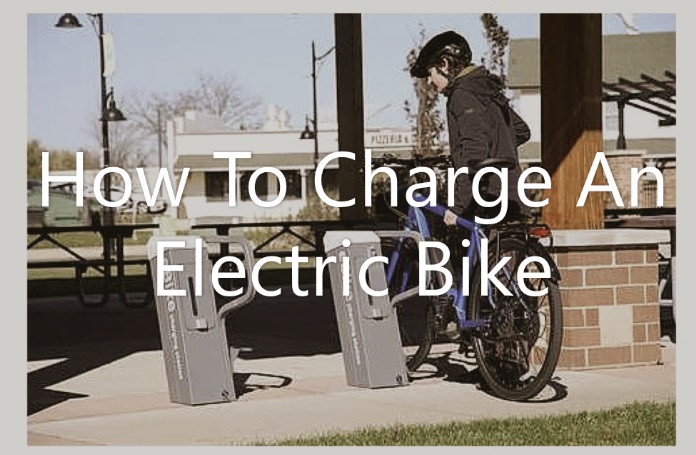How To Charge An Electric Bike?

The electrification of bicycles is a recent revolution that has transformed the cycling industry, contributing significantly to environment friendly commuting and recreational activities. A central aspect of owning an electric bike, or e-bike, is understanding how to charge its battery appropriately to ensure optimal performance and longevity. This article provides an exhaustive guide on how to charge an electric bike and includes practical tips and precautions to keep in mind.
Understanding Electric Bike Batteries
Before we delve into the charging process, let’s familiarize ourselves with the heart of any e-bike – the battery. The battery is the primary component of an e-bike, storing electrical energy that the motor converts into mechanical energy to assist in pedaling.
Electric bike batteries come in many forms, but the most common types are lithium-ion (Li-ion), nickel-cadmium (NiCad), and lead-acid. Of these, Li-ion batteries are the most widely used due to their high energy density, light weight, and long life span. Despite their higher upfront cost, their longer lifespan and better performance make them a wise investment.
Charging Basics
The charging process involves replenishing the depleted electrical energy in your e-bike’s battery. While charging protocols can slightly differ between e-bike models and battery types, the basic process remains the same. So, how to charge an electric Bike?
Each e-bike comes with a specific charger designed to match the battery’s voltage and chemistry. These chargers regulate the amount of electricity flowing into the battery to prevent overcharging, which can reduce the battery’s lifespan and potentially cause safety issues.
To charge an e-bike battery, plug one end of the charger into a standard wall outlet and the other end into the battery charging port. The charging time varies based on the battery’s capacity and the charger’s power. Typically, it can take anywhere from 3 to 6 hours to fully charge an e-bike battery.
Battery Life and Replacement
Electric bike batteries have a finite life and will need replacing after a certain number of charge cycles (typically between 500 and 1,000 cycles, depending on the battery quality). A charge cycle refers to the process of charging a battery from 0% to 100% and then discharging it back to 0%.
The actual lifespan of your battery depends on how you use and care for it. For instance, frequently draining the battery to 0% before recharging can shorten its lifespan.
You’ll know it’s time to replace your battery when it doesn’t hold a charge as well as it used to or if you start experiencing power issues with your e-bike. Replacing the battery is usually a straightforward task, but refer to your e-bike’s user manual or consult a professional if you’re unsure.
Best Practices for Charging an Electric Bike
- Regular Charging: Unlike some battery types that suffer from memory effects, Li-ion batteries don’t require complete discharge before recharging. Therefore, feel free to top off your e-bike battery after each ride. Regular charging can help maintain the battery’s health and ensures your e-bike is ready for your next ride.
- Optimal Charging Temperature: Batteries are sensitive to extreme temperatures. Charging your e-bike’s battery at a temperature range of 50°F to 77°F (10°C to 25°C) is ideal. Overly hot or cold environments can affect the battery’s performance and lifespan.
- Battery Storage: If you’re not using your e-bike for an extended period, don’t leave the battery completely discharged. A battery left in a depleted state can suffer irreversible damage. Store the battery with a charge level between 40% to 80% and keep it in a cool and dry place.
- Avoid Overcharging: Most modern chargers stop charging once the battery is full, but it’s still a good practice not to leave the battery plugged in longer than necessary. Prolonged overcharging can generate excessive heat and can negatively impact the battery’s lifespan.
- Regular Maintenance: Keep the battery clean and free from dust and dirt. Check the charger and battery connectors regularly to ensure they are clean and in good condition. Dirty or corroded connectors can hinder the charging process and reduce the efficiency of energy transfer.
- Use the Right Charger: Always use the charger that came with your e-bike or a manufacturer-approved replacement. Different batteries require different charging profiles, and using an inappropriate charger can damage the battery or present a safety hazard.
Troubleshooting Charging Issues
Even with proper usage and maintenance, you might encounter issues with charging your e-bike’s battery. Here are some common problems and potential solutions:
- Battery Won’t Charge: If your battery won’t charge, first ensure the charger is plugged into a functioning outlet. Check the charger and battery connectors for damage or corrosion. If the battery still doesn’t charge, it may be an issue with the battery management system (BMS), which controls the charging process. In this case, consult an e-bike professional.
- Battery Drains Quickly: If your battery seems to run out of charge faster than it should, it might be due to several factors such as cold weather, frequent hill climbs, or constant high-speed riding. However, if the battery performance drops significantly, it could signal a problem with the battery cells or BMS. It might be time to have your battery checked or replaced.
- Battery Overheats During Charging: If the battery becomes excessively hot during charging, stop charging immediately and disconnect the charger. Overheating can signal a problem with the battery, the charger, or the BMS. Seek professional help before attempting to charge the battery again.
Conclusion: How To Charge An Electric Bike?
Charging an electric bike is a straightforward process, but understanding the battery’s nuances can help maintain its performance and lifespan. Regular charging, adhering to optimal charging temperatures, proper battery storage, avoiding overcharging, regular maintenance, and using the correct charger are vital practices to adopt.
While charging your e-bike, don’t ignore potential warning signs of issues such as the battery not charging, draining quickly, or overheating during charging. By promptly addressing these problems, you can enjoy a safer, more reliable, and more enjoyable electric bike riding experience. As technology continues to advance, we can look forward to more sophisticated and efficient charging solutions for e-bikes in the future.
